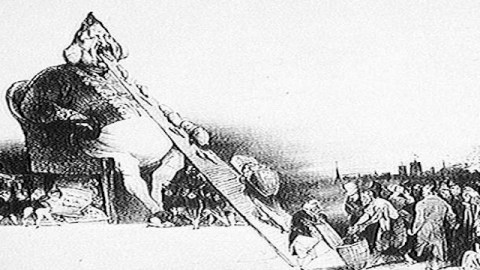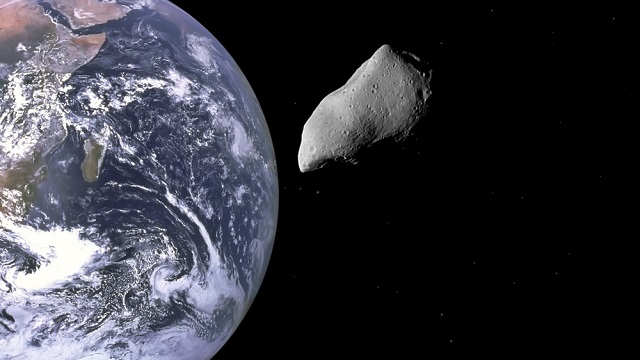Study: Banning Big Cups of Soda Will Lead People to Drink More

Post-rationalist government—where laws and regulations conform to human psychology rather than to the notion that each individual is a logical calculator—is a hot idea these days. Next to old-school policies that provide incentives (pay your taxes on time or you’ll be fined!) there are now an abundance of “nudges” and nudge-like rules in place around the world. (For example, the British government tried a pilot program in which small business owners were informed that almost all their neighbors pay their taxes promptly—and it increased on-time payment substantially). Unfortunately, the debate about this psychological approach to regulation tends to the symbolic and ideological (it’s a jackbooted nanny state! No, it’s as helpful as giving people directions to where they want to go!). Lost in the drama is the more practical question of whether a particular policy, whatever its grand philosophical implications, would actually work. Take, for example, New York City’s proposed ban on soda servings larger than 16 ounces. If the courts ever permit the city to enforce the rule, will it actually lower soda consumption, and thus obesity rates? According to this paper, the answer is no.
In the study, published earlier this month in the journal PLoS One, Brent M. Wilson and his co-authors make the sensible assumption that businesses would try to get around the 16-ounce restriction by offering customers an easy way to buy more than one container at a time. (If this hadn’t occurred to the beverage industry before, it certainly will after they read the paper.) What happens when people who can’t buy containers larger than 16 ounces are offered “bundles” of smaller containers that add up to more than 16?
According to Wilson et al., what happens is that people end up drinking more soda pop than ever.
In their experiment, they presented three different kinds of menu to 24 men and 76 women, all students at their institution (the University of California at San Diego). Along with various food options, one menu (the “Unregulated” version) presented a 16 ounce soda for $1.59, a 24 ounce soda for $1.79, and a 32 ounce soda for $1.99. The “Bundle” version offered a 16 ounce soda for $1.59, two 12 ounce sodas for $1.79, and two 16 ounce sodas for $1.99. And the “No Bundle” version offered only a 16 ounce soda for $1.59. These three test menus were mixed up with others, so that each participant saw 8 or 9 different menus. For each menu, each participantwas asked to mark what s/he would buy, and how much of it.
Results: Even though the “unregulated” menu offered soda in 24- and 32-ounce servings, it was the “bundle” menu that moved the most sugary drink. People who could buy two smaller sodas at once ended up buying more soda overall. On the other hand, when a 16-ounce cup was their only option (no multi-cup deals suggested), people didn’t choose to buy two. Instead, they chose to buy far fewer total ounces of soda.
There were also significant differences in the number of people who chose not to buy soda at all. Nearly four out of ten people bought no drink from the menu that offered only a 16-ounce serving. With the menu that offered bundles of smaller sodas, though, far fewer—16 percent—abstained.
So Wilson et al. predict that the New York regulations, as currently written, will fail. Unless businesses voluntarily decline to try to make money, they will respond to the rules by bundling smaller containers, and that strategy will actually increase their soda sales. To really bring down soda consumption, the study suggests, the city will have to rewrite the rules to ban businesses from offering multi-soda packages. That, of course, would be quite a legal and practical can of worms. Banning a store from stocking 32- ounce cups is simple enough, but how is the city going to make sure that place doesn’t sell two 16-ounce cups at once? Who is going to count the minutes between servings to make sure two cups don’t constitute a “bundle”? Or keep tabs on who bought which cup, to make sure no one person gets too many containers?
One justification for the soda rule was the work of Brian Wansink and David Just, two Cornell economists who showed that larger portions can cause people to unthinkingly consume more. But those same two economists last year repudiated New York’s approach, saying their work does not mean a large-cup ban will have any impact on obesity. Wansink and Just say they got their results in experiments where people aren’t paying attention to portion size—the exact opposite of the situation we’re in when we’re ordering a drink from a menu. When they’re actively thinking about what they want, the pair wrote, “people who want a little buy a little, and people who want a lot figure a way to get it.” And now Wilson et al. have shown businesses exactly how to nudge people to want more, and get more, sugar water.
Cass Sunstein, in his new memoir/manifesto, Simpler(from which I learned about the U.K. tax nudge) repeatedly invokes the need to test policies in the real world. After all, as he writes, a key tenet of psychologically realistic rule-making is that small, logically insignificant details can have a huge effect on how people respond. The new paper doesn’t constitute such a test—as the authors note, they asked people to fill out forms about hypothetical choices, rather than observing behavior at a real restaurant with real drinks—but it’s an important reminder that when it comes time to turn lab results into laws, the mundane details probably count for more than the big philosophical questions.
Follow me on Twitter: @davidberreby





